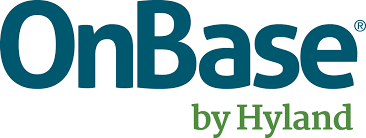Description

Bandwidth

OnBase
Comprehensive Overview: Bandwidth vs OnBase
Bandwidth and OnBase are two distinct solutions serving different markets and providing different functionalities. Here’s a comprehensive overview of each:
Bandwidth
a) Primary Functions and Target Markets
Bandwidth is primarily a communications platform as a service (CPaaS) provider. Its key functions include:
- Voice and Messaging APIs: Enabling businesses to integrate voice calling and messaging functionality into their applications.
- VoIP Services: Services for businesses requiring voice over internet protocol solutions.
- 911 Access and Emergency Communications: Providing emergency service routing and support.
- Phone Number Management: Offering tools for number provisioning, porting, and management.
Target Market: Bandwidth primarily targets businesses ranging from startups to large enterprises that need flexible, reliable communication solutions integrated into their software. This includes sectors such as healthcare, finance, and e-commerce, which require robust communication channels.
b) Market Share and User Base
As a CPaaS provider, Bandwidth holds a notable position in the market, competing with other well-known entities like Twilio, Nexmo, and Plivo. While specific market share statistics fluctuate, Bandwidth is recognized as one of the sizeable competitors in this space due to its direct access to the tier-1 carrier network in the US, which many competitors lease instead.
c) Key Differentiating Factors
- Direct Network Access: Bandwidth owns and operates its own nationwide VoIP network, providing greater control over service quality and pricing.
- Emergency Services Expertise: Specialization in 911 services, which is a crucial need for certain sectors.
- Cost Efficiency: Potentially more cost-effective for large-scale implementations due to its network ownership.
OnBase
a) Primary Functions and Target Markets
OnBase is an enterprise content management (ECM) and business process management solution by Hyland Software. Its primary functions include:
- Document Management: Enabling digital storage, retrieval, and management of documents.
- Workflow Automation: Automating various business processes to increase efficiency.
- Case Management: Managing and tracking business cases and activities systematically.
- Records Management: Ensures compliance with records-keeping requirements across industries.
Target Market: OnBase is targeted towards organizations that require robust document and content management solutions, including sectors like healthcare, government, higher education, financial services, and insurance, which demand high levels of information management and compliance.
b) Market Share and User Base
OnBase is one of the leading ECM solutions, widely adopted across different industries with a substantial user base globally. While the ECM market includes strong competitors like IBM FileNet, SharePoint (Microsoft), and OpenText, OnBase is a notable player, particularly praised for its customization and integration capabilities.
c) Key Differentiating Factors
- Integration Capabilities: Offers seamless integration with various line-of-business systems, such as ERP, CRM, and other enterprise applications.
- Customizable Workflows: Highly customizable workflows cater to diverse industry-specific needs.
- Scalability and Versatility: Suitable for both small-scale deployments and large enterprise environments with complex requirements.
Comparison and Conclusion
- Functionality Spectra: While Bandwidth provides communication solutions, OnBase focuses on document and content management. Their primary functionalities cater to fundamentally different business needs.
- Target Markets: Both products target diverse markets but serve different operational areas within businesses. Bandwidth supports communication needs, whereas OnBase supports content and process management.
- Unique Value Proposition: Bandwidth’s value lies in its control over its network and efficiency in communications integration; OnBase’s value comes from its ability to handle complex document workflows and ensure compliance in information management.
Overall, while both products are leaders within their respective fields, a direct comparison is not feasible due to their distinct feature sets and market applications. Organizations would choose between them based on whether they need to enhance communications platforms or streamline document and content management processes.
Contact Info

Year founded :
2021
Not Available
Not Available
United Arab Emirates
Not Available

Year founded :
1991
+1 440-788-5000
Not Available
United States
Not Available
Feature Similarity Breakdown: Bandwidth, OnBase
Bandwidth and OnBase are two distinct products that cater to different needs within the technology space. Bandwidth is primarily a communications API platform, whereas OnBase is an enterprise content management (ECM) solution. Here’s a feature similarity breakdown for these products:
a) Core Features in Common:
Since both products serve different primary functions, they do not share core features in the conventional sense. However, if we consider broader business-enabling functionalities, there might be some commonalities:
-
API Integration Capabilities:
- Both platforms provide robust API capabilities, allowing users to integrate their services with other business applications. Bandwidth offers APIs for communication services, while OnBase provides APIs for integrating content management tools.
-
Cloud Deployment:
- Both offer cloud-based solutions, making them scalable and accessible from various locations, which can be crucial for businesses looking to leverage flexible deployment options.
-
Customization:
- Each platform allows users a degree of customization to tailor the services to specific business needs, whether it is customizing communications solutions in Bandwidth or configuring workflows in OnBase.
b) User Interface Comparison:
-
Bandwidth:
- Bandwidth's user interface is designed to be developer-friendly, focusing on the ease of use for integrating communication functions into applications. The interface is often streamlined, providing documentation and dashboard tools that facilitate API management and monitoring.
-
OnBase:
- OnBase features a more comprehensive interface suitable for business users, offering a broad range of functionalities related to content management, such as document storage, workflow automation, and reporting. Its interface is typically more complex, reflecting the depth and breadth of its ECM capabilities.
c) Unique Features:
-
Bandwidth:
- Communication APIs: Bandwidth excels in communication services, providing APIs for voice calling, messaging (SMS, MMS), emergency services, phone numbers (ordering, porting), and more. These APIs are unique to developers wanting to embed communication functionality into applications.
- Carrier Services: Bandwidth offers telecom services, giving it a unique position where it controls the network infrastructure, enhancing service reliability and flexibility.
-
OnBase:
- Document Management: OnBase's ability to store, organize, and manage documents in a centralized repository is a standout feature.
- Workflow Automation: OnBase excels in automating business processes with its workflow automation tools, allowing businesses to streamline operations and reduce manual intervention.
- Enterprise Integration: OnBase offers deep integration options with other enterprise systems like ERP, CRM, and HRM systems, making it a key part of a company's IT ecosystem.
In conclusion, while Bandwidth and OnBase might have some overlap in terms of cloud deployment and API capabilities, they cater to different aspects of business operations, with Bandwidth focusing on communication solutions and OnBase on content and process management. Each product's unique features align with its core mission, making them suitable for different business priorities and needs.
Features

Not Available

Not Available
Best Fit Use Cases: Bandwidth, OnBase
Bandwidth:
a) For what types of businesses or projects is Bandwidth the best choice?
Bandwidth is a communications services provider that specializes in cloud-based voice, messaging, and emergency service solutions. It is best suited for:
-
Telecommunications Services: Companies that require robust telephony solutions, including VoIP, SIP trunking, and UCaaS platforms, benefit greatly from Bandwidth's comprehensive suite.
-
Enterprises with High Call Volumes: Businesses such as call centers or customer service departments that need reliable voice communication at scale will find Bandwidth's infrastructure capable of meeting their needs.
-
Software and Application Developers: Companies developing apps that incorporate voice and messaging features can benefit from Bandwidth's APIs, which allow easy integration of communication functionalities.
-
Emergency Services: Organizations that require enhanced 911 solutions could utilize Bandwidth's emergency services to ensure compliance and reliability in critical situations.
-
Businesses Focused on CPaaS (Communications Platform as a Service): Bandwidth provides flexible solutions and APIs for businesses looking to build custom communication solutions rather than using off-the-shelf products.
b) In what scenarios would OnBase be the preferred option?
OnBase is an enterprise content management (ECM) solution developed by Hyland, specializing in document management, workflow automation, and case management. It is optimal for:
-
Financial Services: Banks and credit unions that need to manage large volumes of documents, maintain compliance, and streamline loan processing benefit from OnBase's secure and efficient document management capabilities.
-
Healthcare: With its focus on data security and regulatory compliance, OnBase is well-suited for healthcare organizations needing to manage patient records while ensuring HIPAA compliance and improving billing processes.
-
Higher Education: Universities and colleges looking to automate admissions, student services, and administrative processes can utilize OnBase to enhance efficiency and reduce paperwork.
-
Government Agencies: OnBase's strong workflow capabilities and secure document storage make it suitable for public sector entities dealing with case management and compliance.
-
Insurance: Companies in this sector use OnBase to manage policy administration, claims processing, and ensure compliance with industry regulations.
d) How do these products cater to different industry verticals or company sizes?
Bandwidth:
-
Industry Verticals: Bandwidth serves telecommunications companies, tech startups, and large enterprises with its flexible API-based services. Its solutions are particularly beneficial in industries where communications infrastructure is critical like retail, hospitality, and healthcare.
-
Company Sizes: Both small and large enterprises can leverage Bandwidth’s scalable solutions. Small startups can integrate specific voice or messaging features into their apps, while larger organizations benefit from end-to-end communication solutions.
OnBase:
-
Industry Verticals: Focused heavily on sectors that require robust document handling, OnBase serves industries like finance, healthcare, government, and education, providing specialized workflows and compliance management solutions.
-
Company Sizes: OnBase is scalable and suits mid-sized to large organizations that need comprehensive document management and workflow automation. Its broad suite of features is particularly beneficial to enterprises with complex operational and regulatory needs.
In summary, Bandwidth is optimized for businesses and projects oriented around communications infrastructure and application development, while OnBase is tailored to organizations requiring comprehensive content management and workflow solutions across various regulated industries.
Pricing

Pricing Not Available

Pricing Not Available
Metrics History
Metrics History
Comparing undefined across companies
Conclusion & Final Verdict: Bandwidth vs OnBase
When evaluating Bandwidth and OnBase, it's essential to assess the relevance of each product to your specific needs, as these solutions cater to different aspects of business operations.
a) Which product offers the best overall value?
The determination of which product offers the best overall value largely depends on the specific needs and priorities of the business. Bandwidth, which typically excels in communication services such as voice, messaging, and 911 access, provides significant value if your business requires robust telecommunication infrastructure. OnBase, on the other hand, is a comprehensive enterprise information platform known for document management, workflow automation, and process optimization. Therefore, OnBase may offer better overall value for organizations focused on improving internal processes and document management.
b) Pros and cons of choosing each of these products:
Bandwidth:
- Pros:
- Strong capabilities in voice, messaging, and emergency services.
- Flexibility in integrating with existing communication systems.
- Scalable solutions for businesses of all sizes.
- Cons:
- Primarily focused on telecommunication features, may not address broader enterprise content management needs.
- Could require additional integrations for businesses needing comprehensive IT solutions beyond communication.
OnBase:
- Pros:
- Robust document management and workflow automation capabilities.
- Can significantly improve efficiency in firms with heavy documentation needs.
- Allows integration with multiple enterprise systems, enhancing organizational synergy.
- Cons:
- May involve a steeper learning curve and implementation time.
- Initial setup costs can be high, especially for small businesses.
c) Specific recommendations for users trying to decide between Bandwidth vs OnBase:
-
Assess Core Needs: Clearly define the primary challenges your business is facing. If communication infrastructure and cost-effective telephony are priorities, Bandwidth is a more suitable choice. If the goal is to streamline document flow and improve overall process management, OnBase is more appropriate.
-
Consider Integration and Scalability: Evaluate existing systems and the ease with which either Bandwidth or OnBase can integrate. Consider future growth; choosing a solution that can scale with your operation is crucial.
-
Budget and Resources: Consider your budget for initial investment and ongoing costs. OnBase, with potentially higher upfront costs, might be suitable for businesses looking for a long-term return on document management efficiency. Bandwidth might be more budget-friendly if you're focusing on communication enhancements.
-
User Training and Support: Evaluate the level of support and training you will require. OnBase might require more extensive training, so consider your internal capacity for managing this transition.
In conclusion, the choice between Bandwidth and OnBase should be guided by an introspective look at your organization’s specific operational needs, budget constraints, and strategic goals. Choose Bandwidth if communication infrastructure is your primary concern and OnBase if you are aiming to revamp your document management and business process efficiency.
Add to compare
Add similar companies




